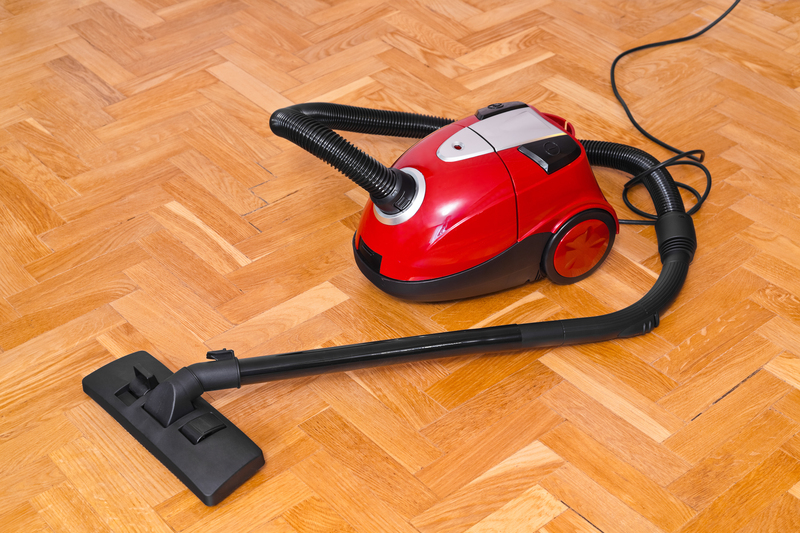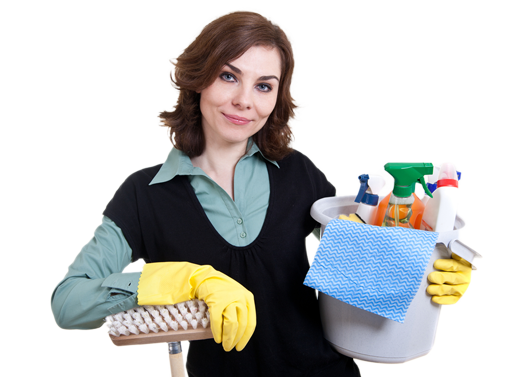Easy Steps to Remove Pet Odor and Revitalize Your Home
Posted on 07/06/2025
Easy Steps to Remove Pet Odor and Revitalize Your Home
Pets fill homes with joy, love, and companionship, but sometimes, they also bring unwanted pet odors that linger. Whether it's a mischievous puppy accident, a beloved old cat's odors, or just the general aroma of your furry friends, getting rid of these smells is crucial for a fresh and healthy home environment. This comprehensive guide will provide easy steps to remove pet odor and effectively revitalize your home--so you and your loved ones can enjoy every breath indoors.
Why Is It Important to Remove Pet Odor?
Beyond comfort and pride in a clean home, removing pet smells addresses multiple concerns:
- Eliminates bacteria and allergens associated with pet dander and waste
- Prevents re-marking or repetitive accidents
- Makes your house more appealing to visitors--and if selling, to potential buyers
- Promotes a healthier environment for humans and pets alike
Let's explore the most effective and easy ways to remove pet odors as well as methods to revitalize your living spaces.

Step 1: Identify the Source of the Pet Odor
Before you can efficiently eliminate pet odors from your home, you need to find exactly where the smell is coming from. Common sources include:
- Carpeted areas with urine, vomit, or fecal stains
- Upholstered furniture and pet beds
- Pet toys, collars, and bedding
- Litter boxes, cages, or crates
- Walls or hard floors where accidents have occurred
A UV blacklight can help spot hidden urine or stains invisible to the naked eye. Mark these problem spots to address them thoroughly in the next steps.
Step 2: Act Fast on Fresh Accidents
Dealing with odors as soon as they happen is crucial. The fresher the mess, the easier it is to prevent stubborn smells. Follow these steps for immediate cleanup:
- Blot, don't rub. Use paper towels or a clean, absorbent cloth to blot up as much moisture as possible from carpets or upholstery.
- Rinse with water. After removing initial waste, rinse the area with a small amount of water and blot again to dilute and remove more of the odor-causing substance.
- Avoid steam cleaners. The heat can set stains and odor deep into the fibers, making removal far more difficult.
Step 3: Use Enzymatic Cleaners for Deep Removal
When it comes to getting rid of pet stains and odors, enzymatic cleaners are the gold standard. These specialized formulas use natural enzymes to break down odor-causing molecules at the source, rather than just masking the smell.
How to Use Enzymatic Cleaners Effectively:
- Saturate the area generously. Ensure the cleaner penetrates deeply into carpet, padding, or upholstery, surpassing where the original mess reached.
- Allow ample dwell time. Most products require at least 10-15 minutes to work, and in tough cases, overnight application works best.
- Blot and air dry. After the designated dwell time, blot up any excess moisture and allow the area to air dry completely.
Tip: For severe or old odors, repeat the process multiple times. Enzymatic cleaners are safe for both pets and humans when used as directed--ideal for pet odor neutralization throughout your home.
Step 4: Deodorize and Clean Carpets & Rugs
Carpets are notorious for trapping pet odors, dander, and hair. Regular and deep cleaning is essential to remove lingering smells and refresh your home:
- Vacuum thoroughly. Use a vacuum with a HEPA filter to capture pet hair, dander, and smaller particles.
- Use baking soda. Sprinkle a generous amount of baking soda--the ultimate natural deodorizer--over carpets and allow it to sit for several hours (or overnight) before vacuuming.
- Steam cleaning (with caution). Only steam clean after confirming all stains and odors are removed, and never for fresh urine stains. Use a pet-safe solution for best results.
For highly soiled or persistent smells, renting professional carpet cleaning equipment or hiring a pet odor removal service may be worth considering.
Step 5: Revitalize Upholstery and Curtains
Furniture, drapes, and throw pillows can also trap and emit pet odors. Here's how to rejuvenate these surfaces:
- Launder what you can. Remove covers, curtains, and washable pillows to machine wash in hot water with regular detergent and a cup of white vinegar (a natural deodorizer).
- Spot clean. For non-machine-washable items, use an enzymatic or fabric-safe cleaner and blot away stains and odors.
- Air out cushions. After cleaning, let fabrics air dry outside in sunlight when possible; UV rays help neutralize residual odors.
Step 6: Refresh Pet Bedding and Toys
Don't forget your pet's personal items! Pet beds, toys, leashes, and collars easily absorb bad smells. Use these quick tips for effective freshness:
- Wash beds and blankets regularly. Use hot water and pet-safe detergent--add vinegar for extra deodorizing power.
- Clean toys. Hard toys can go through the dishwasher (top rack) or soak in a 50/50 vinegar and water solution. Machine wash soft toys as you would bedding.
- Replace items that can't be cleaned. Sometimes, old or heavily soiled pet items are best replaced to fully eliminate the odor source.
Step 7: Tackle Litter Boxes, Cages, and Crates
For cat owners, the litter box is a major source of pet odors. Similarly, cages and crates can harbor unpleasant smells for other pets. Take these steps for long-lasting freshness:
- Clean daily. Remove pet waste as promptly as possible.
- Disinfect weekly. Empty, clean, and scrub with a pet-safe disinfectant. Rinse thoroughly, then dry before refilling.
- Change filters and liners. Use activated charcoal litter box filters or disposable crate liners to trap odors.
- Switch litter types. Unscented, clumping clay or silica gel litters often absorb odors better than traditional options.
Step 8: Maintain Air Quality and Circulation
Eliminating pet odor isn't only about surface cleaning; maintaining good indoor air quality is just as vital for a truly revitalized home.
- Open windows. Allow fresh air to circulate daily, reducing trapped indoor odors.
- Use air purifiers. Models with True HEPA and activated carbon filters are excellent for removing dander and airborne pet smells.
- Try natural deodorizers. Set out bowls of baking soda, white vinegar, or activated charcoal to passively absorb airborne odors.
- Use essential oils with caution. Some can be toxic to pets, so consult your vet before diffusing around the home.
Step 9: Prevent Future Pet Odors
The easiest way to keep your home smelling fresh and clean is to prevent pet odor buildup in the first place. Here's how to stay on top of it:
- Groom pets regularly. Bathe and brush your pets to reduce dander and keep them clean.
- Schedule vet checkups. Bad breath or strong body odor can be a health issue; consult a professional if you notice unusual smells.
- Establish a cleaning routine. Frequent vacuuming, mopping, and laundering go a long way toward odor control.
- Set house rules. Keep pets off fabric-heavy furniture or carpeted rooms to minimize odor-prone zones.
Step 10: Consider Professional Help When Needed
When all else fails, persistent pet odors may require a professional touch. Pet odor removal experts use commercial-grade cleaning products and techniques such as ozone treatments, thermal fogging, or deep hot-water extraction to tackle even the toughest smells. This is especially useful if:
- You're moving into a home with old pet odors you can't identify or eliminate
- You're preparing your home for sale and need a guaranteed fresh result
- You've tried all home solutions without success
Eco-Friendly and Pet-Safe Odor Removal Solutions
Many conventional cleansers contain harsh chemicals that may not be safe for pets or small children. For peace of mind, opt for natural pet odor removal remedies and green cleaning products:
- Baking soda and vinegar: A classic combo that eliminates most organic odors safely
- Hydrogen peroxide (3%): Useful for tough stains (test on fabric colorfastness first)
- Castile soap: A gentle, effective cleanser for pet toys, bowls, and washable items
- Activated charcoal: Place bags in problem areas for passive, ongoing odor control
- DIY enzyme cleaner: Make your own by fermenting citrus peels in sugar water for several weeks
Always check the safety of any cleaning agent before use with pets, especially around cats who are sensitive to many substances.
Additional Quick Tips for a Fresh, Odor-Free Home
- Wash pet collars and leashes often. These are often overlooked yet retain strong smells.
- Don't forget floors and walls. Clean hard surfaces, baseboards, and corners pets frequent.
- Rotate and replace air filters. In HVAC, air conditioning, and vacuums, to keep air fresh and clean of pet dander.
- Add houseplants. Species like Boston fern and peace lily can help absorb and neutralize indoor contaminants (non-toxic options only).

Conclusion: Enjoy a Truly Refreshed, Odor-Free Home
With pets, a certain amount of scent will always be present, but with easy steps to remove pet odor, you can keep your home fresh, healthy, and inviting. By acting quickly, using the right products (especially enzymatic cleaners), establishing regular cleaning routines, and making small but impactful home adjustments, you'll revitalize your living environment without sacrificing the joy pets bring.
Consistency is key--make these tips a regular habit, and you'll spend more time enjoying cuddles and much less worrying about unpleasant pet smells in your home.
Frequently Asked Questions about Pet Odor Removal
How do I find hidden pet odors in my house?
Use a UV blacklight to expose urine or organic stains invisible to the eye. Also rely on your sense of smell and check under furniture, along baseboards, and in corners.
What's the fastest way to get rid of pet odor in a room?
Ventilate the space, sprinkle baking soda on soft surfaces, vacuum thoroughly, and use an enzymatic spray. Air purifiers and natural deodorizing bowls boost results.
Are homemade cleaners as effective as commercial ones?
For mild odors and regular maintenance, natural solutions like vinegar and baking soda work wonders. For tough, old, or severe odors, professional enzymatic cleaners may perform better.
Is it safe to use air fresheners around pets?
Many commercial air fresheners contain chemicals or fragrances harmful to pets. Opt for pet-safe, unscented deodorizers and always read labels.
What if pet odors keep returning?
Persistent odor may indicate deep contamination (pads/subfloor) or ongoing accidents. Re-treat the area, address pet health/behavior, and consult professionals if needed.
Ready to enjoy a fresher, more welcoming space? Follow these steps to remove pet odors and revitalize your home today!




